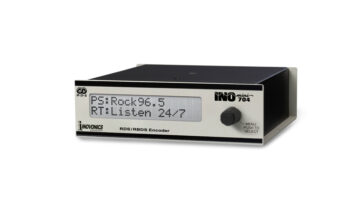
Fig. 1: Those lights again!
When I wrote in late 2015 about the Kentiger HY-502 I had no idea just how popular the article would be. People from all over the world have written me to tell me how much they enjoyed both the story and the audio from the modified unit. I have mine connected to the Amazon Echo Dot in my bedroom and use it every day.

Fig. 2: IC light plug (unplugged) and diode (shorted out under board).

Fig. 3: The IC, diode and plug for lights (unplugged).

Fig. 4: Kentiger under-board mods.
Recently, I noticed that Kentiger has come out with an updated unit, the HY-V10. Available in three colors (red, blue or black), it can be found on Amazon.com and other places, and for even less money than the original unit. Of course, my curiosity was piqued, so I ordered one — for $16.64 plus free shipping.
When the new unit arrived, I took it out of the box and saw it was about two-thirds the size of the older unit. I hooked it up to my Athena speakers and fired it up. Immediately, those lights came on again! However, the sound was good … very good, in fact — far better than the stock older unit. Also, the Bluetooth has a longer range. I had to open it up and see what was different.
It opens exactly like the older unit. Once opened, I saw why it sounded so good: It has many of the mods that we did to the older unit done to it already! The op-amp used is an RC4559 — a fully capable one, so no changes needed there. They also decoupled the op-amp’s power supply with a resistor and a 47 uF capacitor. The traces are all thicker now, as well.
In fact, the only things I found necessary to do were to short out the diode mentioned in the original article, put a decoupling capacitor on the main power amp IC, put a bigger jumper on that IC’s power supply and (of course) pull the plug on the lights. Doing these things made the new unit sound exactly like the old unit after being modified.
I’m happy to say that this newer unit continues the pedigree of the older unit, and at about 30 percent cheaper too.
Dana Puopolo is chief engineer at WGLS(FM), Rowan University in Glassboro, N.J.












